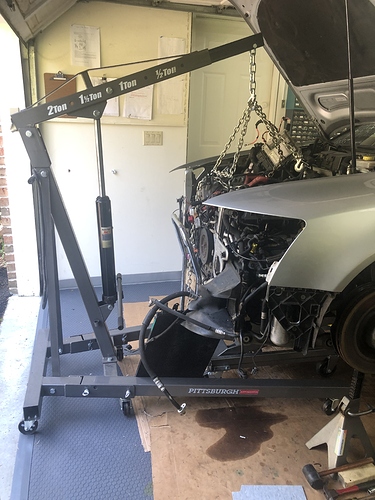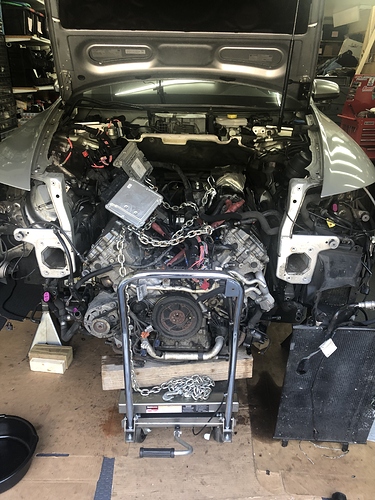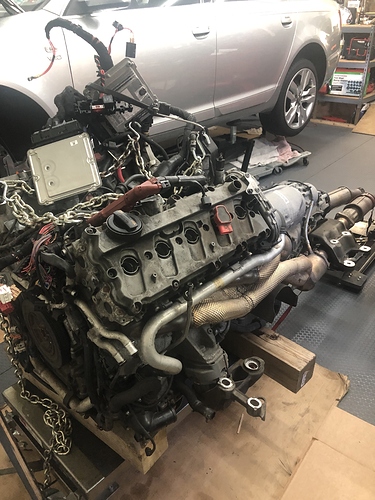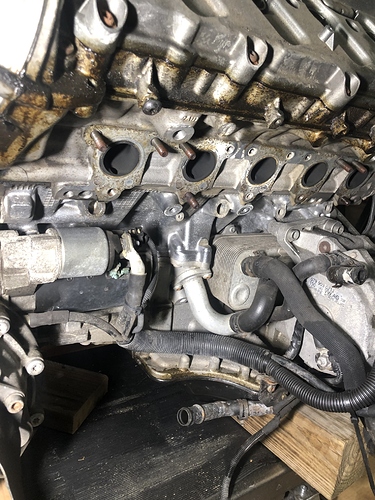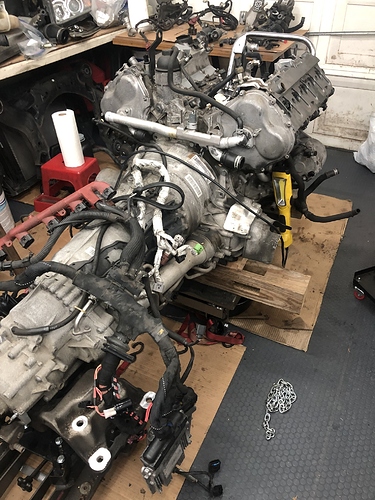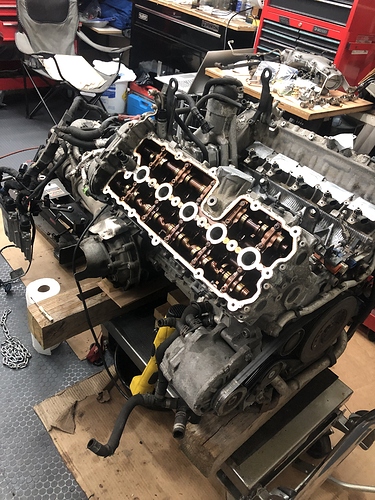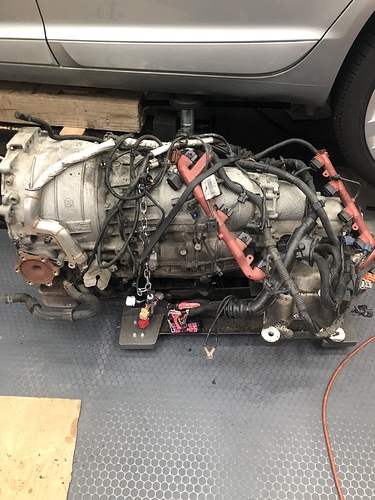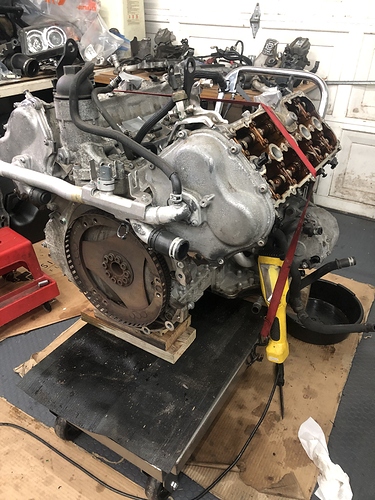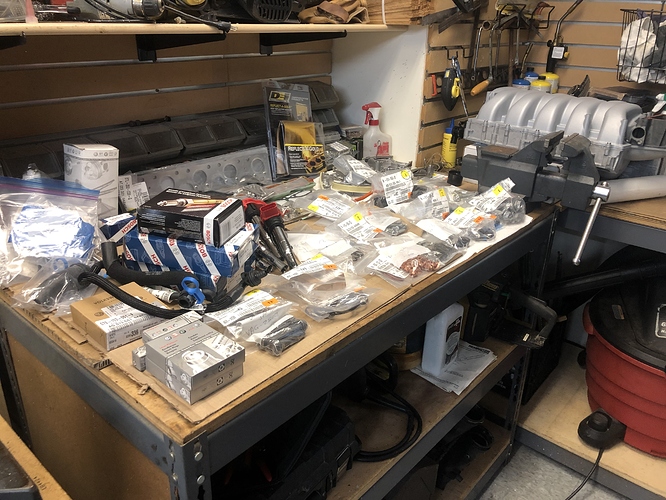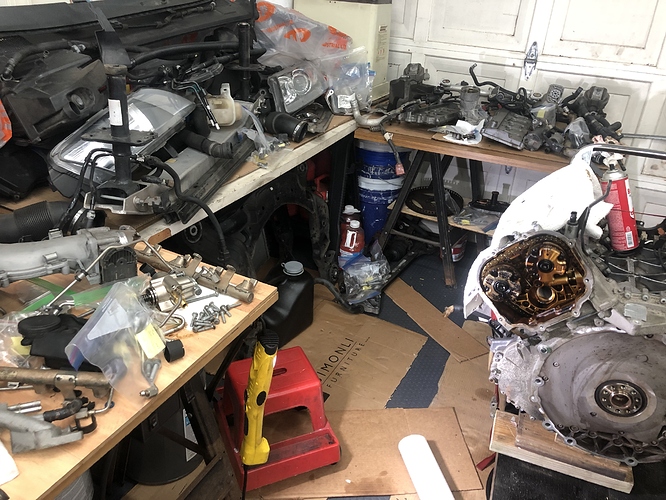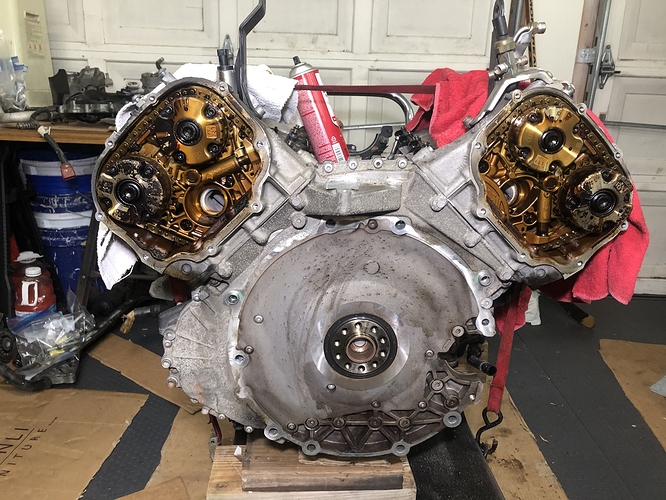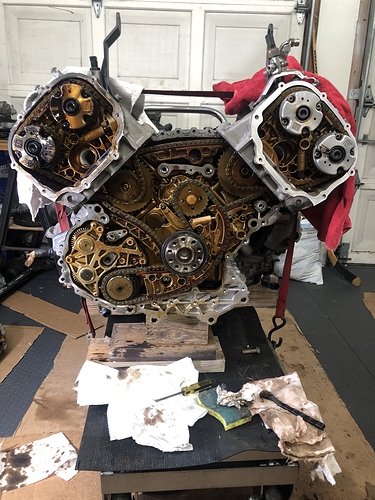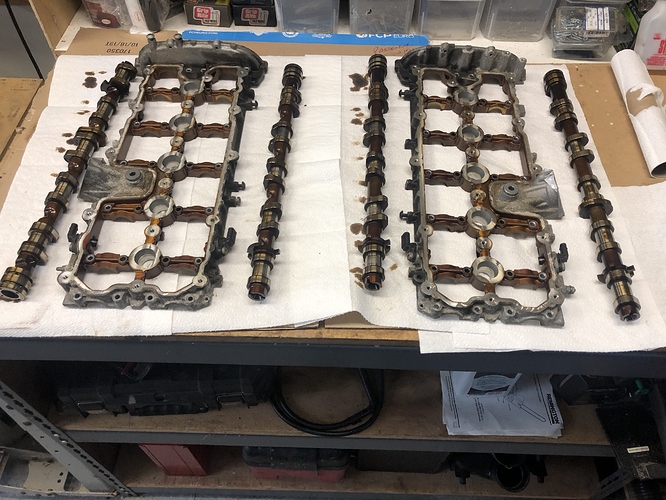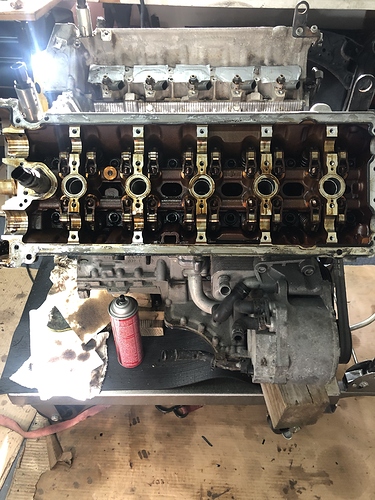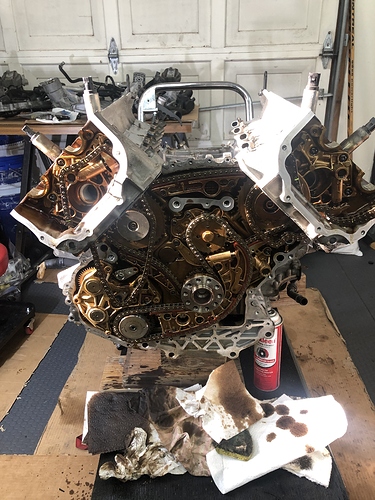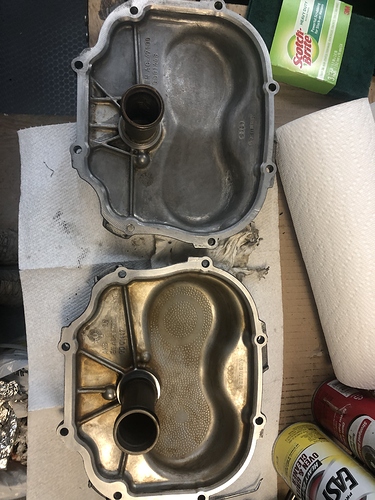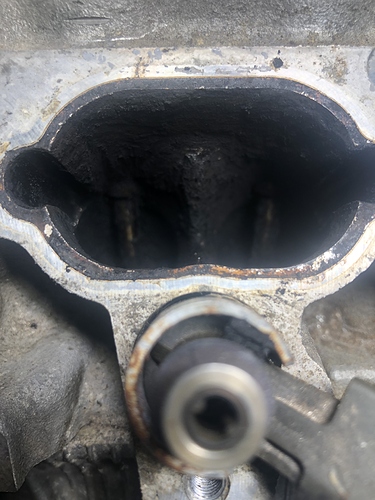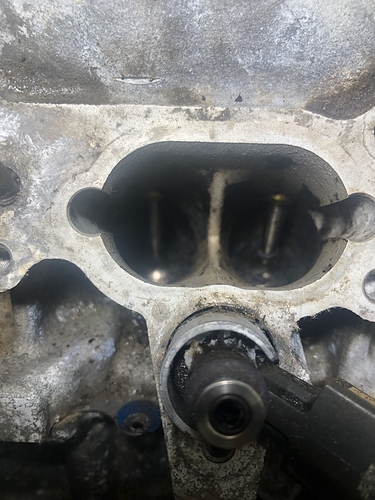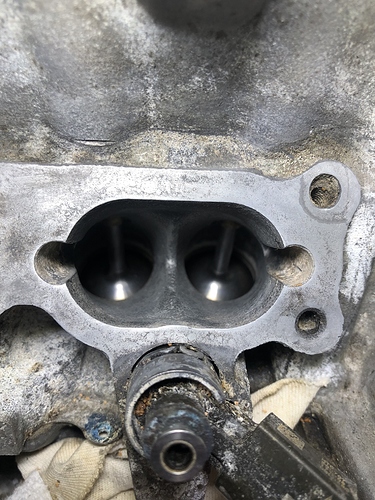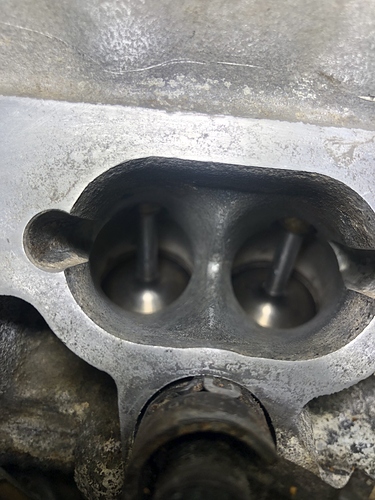So I am laying underneath this beast, starting to loosen up the bolts and a vivid vision of my head squashed beneath 900 lbs of engine and transmission comes floating into my mind.
I have a hoist and a 3 ton jack, so I decide to employ them both, one under the transmission mount and the other connected to chains off the engine hoist points.
Then I start dropping it a bit so I can get to the transmission selector cable and get that off. Back to the bolts, do them in the order the Bentley suggests and then I notice that the subframe is just floating there. OK, lets just get rid of it. Raise it up a bit with the hoist, slide the subframe out, redo the wood blocks, lower the hoist and the jack on the trans down and she’s ready to be pulled:
Start rolling her back, hey not too bad (my garage and drive are only slightly sloped), but as I rounded the bend from one bay to the next, I am stopped. The full impact of the weight settled in. Fortunately the kid is home from college. Attach a strap to the lift to pull with, he pushes and it’s in the garage waiting to be dissected:
Leaving a gaping hole where once 400+ horsepower engine and a sophisticated dual clutch trans sat:
I wish I had some extra cash, because those headers and exhaust just don’t do this thing any justice at all. Who the frick came up with this layout anyway?
So, off to have a beer or two, then back at to disassemble the trans from the engine.
Ed

